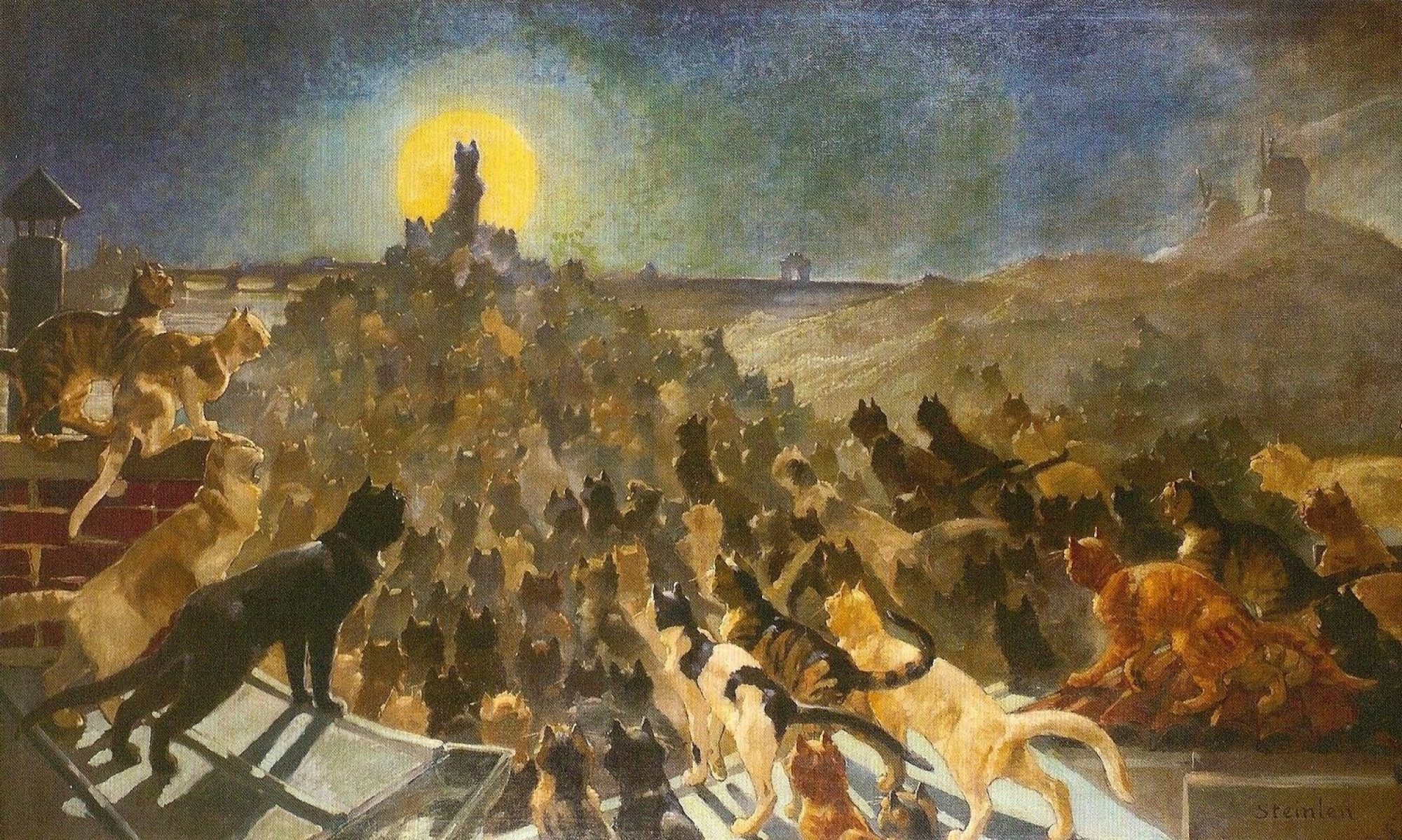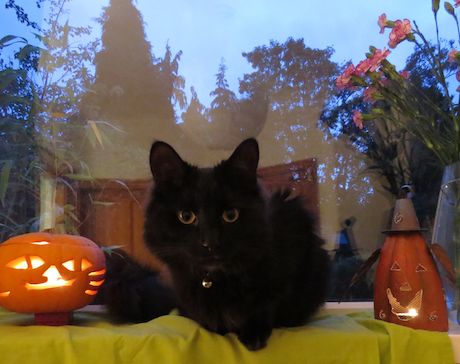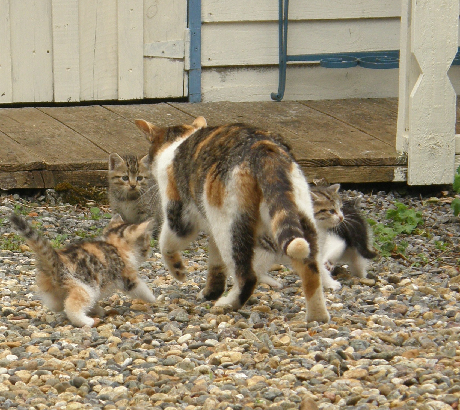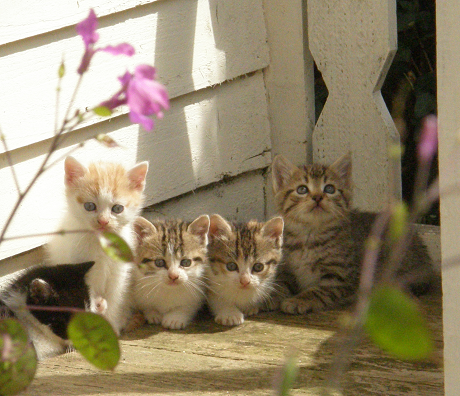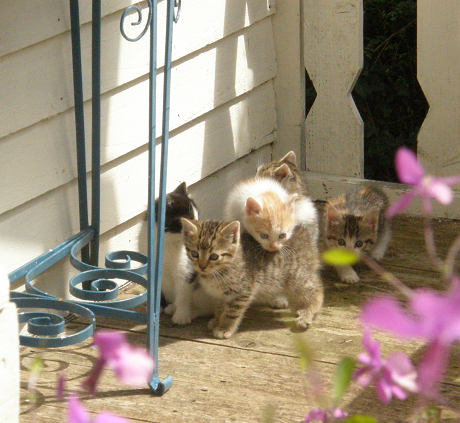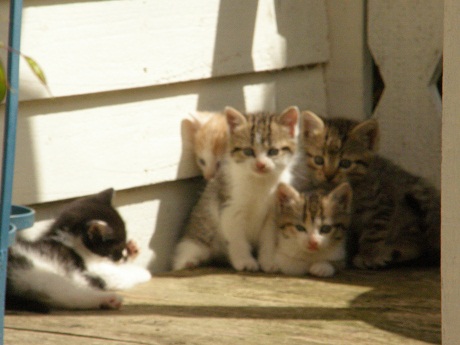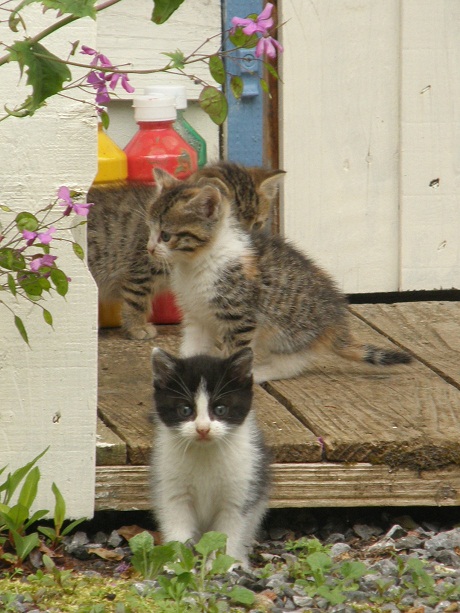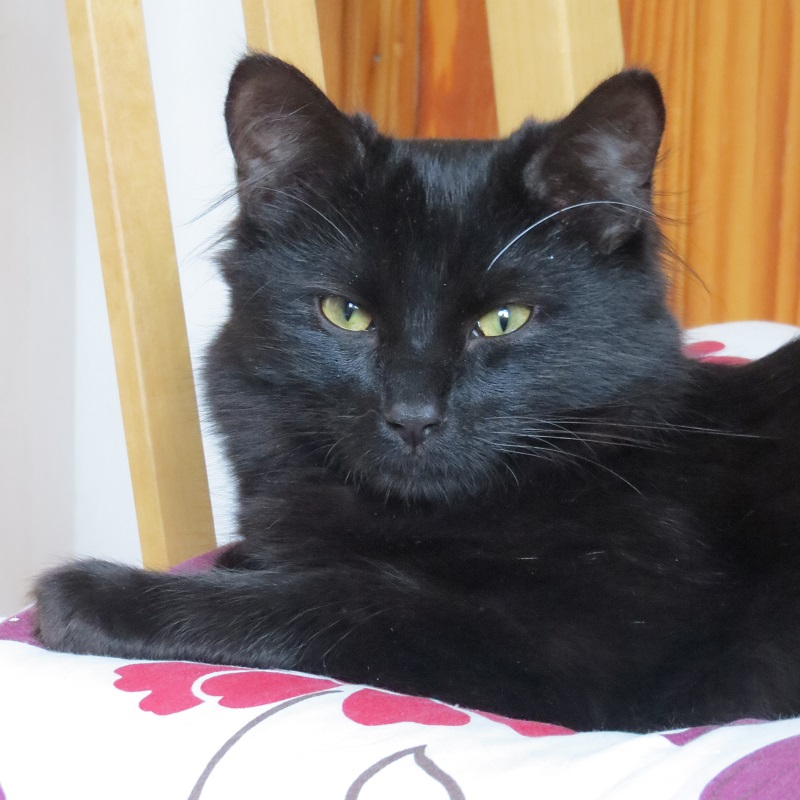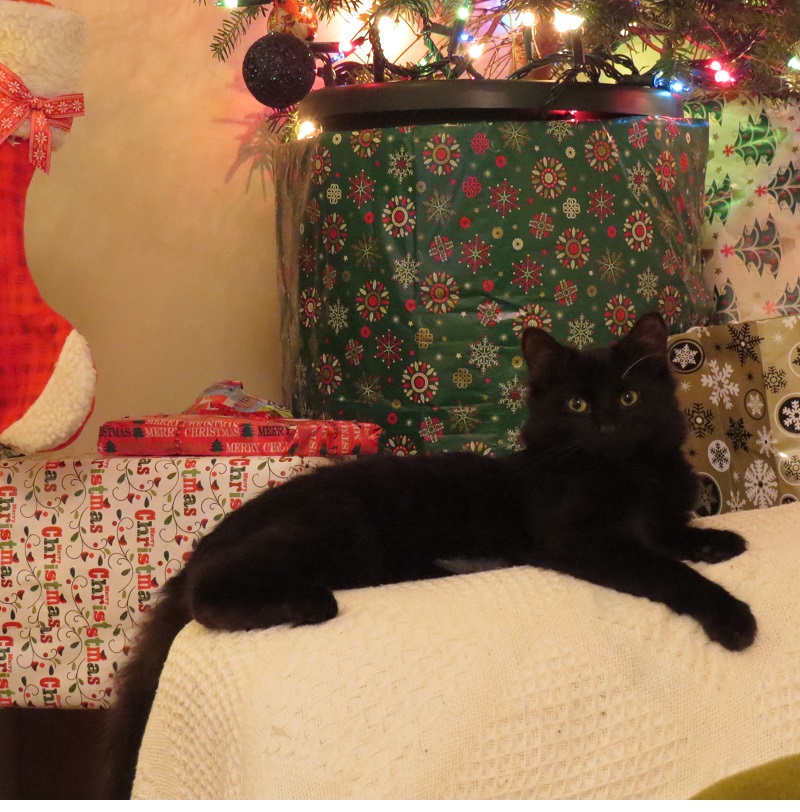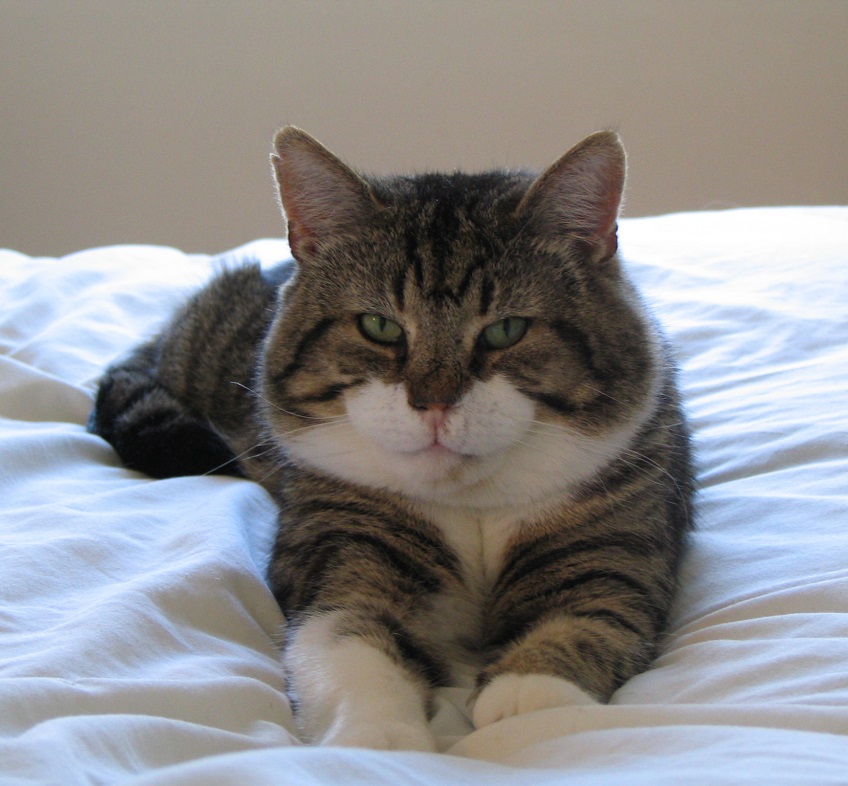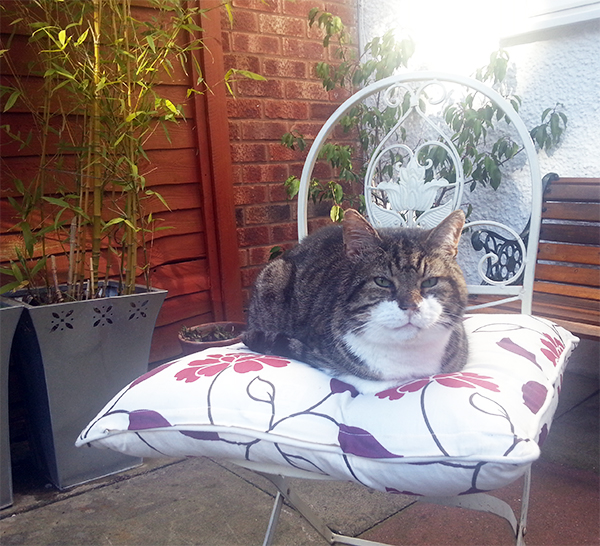Cat of the Month ~ August 2015
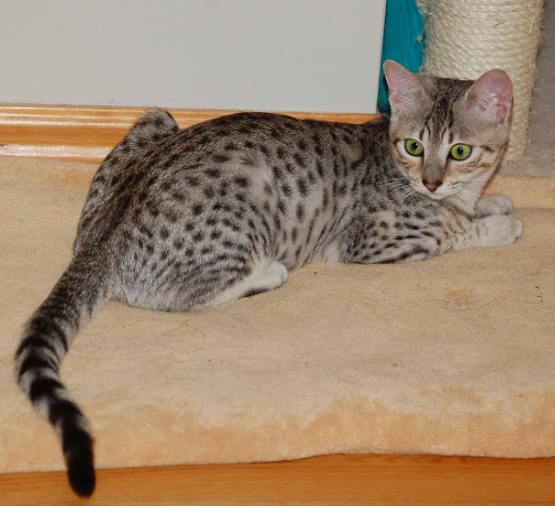
A young Egyptian Mau
monacocattery.com
It has been proven that it was in Ancient Egypt where the feline we call the Egyptian Mau originated. Their ancestors are strongly and frequently depicted in the artworks of the Ancient Egyptians. Many of their pictures are still intact today and they show heavily spotted cats bearing the distinctive ‘mascara’ marking and coat barring seen on today’s Mau. Indeed recent findings in research studies lead by feline geneticist Leslie Lyons, PhD has confirmed that cats first originated in Egypt. There is archaeological and genetic evidence to show that cats first originated in the famous ‘fertile crescent’.
The Egyptian Mau breed has five unique physical features that should be apparent at a glance.
- One is the brow line and characteristic eye set that gives the breed a somewhat sad and anxious look.
- The eye color of the Mau is described as “gooseberry green”.
- A flap of skin extending from the posterior end of the ribcage to the hind leg gives the Mau a phenomenal leaping ability.
- The Mau can run at very high speed also due to its extended skin flap on the hind leg.
- Mau’s have a “tiptoe” graceful stance given by the hind legs being proportionally longer than the front legs.
It is said that the Egyptian Mau arrived in the USA in 1956 when Russian Princess Nathalie Troubetskoy, with help from Richard Gebhardt, imported three Maus from Italy: Two silver females, Baba and Liza, and a bronze male called ‘Jojo’. The Mau was granted recognition in The International Cat Association in 1979.
The Egyptian Mau has often been thought of as an aloof and shy breed. This may be true but when domesticated fully the Mau has a special affinity with its human family. It is a very close bond that is so different than with other breeds. A typical Mau will command attention and will not allow you to push it away, as it seems to require the fuss o fit’s immediate ‘keeper’. In addition the breed is intensely loyal (and yet still as aloof as a cat can be).
The Mau has been shown as having an extraordinary power of scent, hearing, and sight. It may well be for this reason they are so shy and sensitive a cat – easily frightened and upset by sudden loud, unpleasant noises. If a Mau is to be taken to shows then they must be introduced to the environment early so that they will accept the loud sounds and inspection handling of the ring.
The Mau is the only natural spotted breed of domestic cat, showing good contrast between the background color and pattern. The pattern is random with any size or shape of distinct spots. They have an “M” on the forehead, often referred to as the mark of the scarab, and a dorsal stripe travels the length of the spine to the tip of the tail. Legs, tail, neck and upper chest are barred with at least one broken necklace. The haunches and shoulders show a transition between spots and stripes.
The eyes are large and alert, shaped like a slightly rounded almond, with a slant towards the base of the ear. This eye set contributes to the characteristic “worried” look of the breed. The eye color of the Mau is gooseberry green. If you have never seen a gooseberry, a green grape comes close but isn’t quite the same.
Its head is a slightly rounded, wedge-shape of a medium length. The profile has a gentle concave rise from the bridge of the nose to the forehead, not to be dishy or arrow straight. The slightly flared ears are medium to large, alert, moderately pointed and broad at the base. The hair on the outer ear is very short and close-lying that results in an almost transparent look when combined with the delicate shell pink inner color.
The Egyptian Mau is a statuesque breed with a muscular, elegant body. It is a graceful feline athlete is hard and lithe. When standing, the Mau has a characteristic “tiptoe” stance, with hind legs longer than the front. The body rises gradually from the back of the prominent shoulder blades to the hips. The medium-length tail tapers slightly towards the dark tip. The hair displays a lustrous sheen on all three accepted colors: silver, bronze and smoke. Its coat is medium in length; in the smoke color the coat texture is silky and fine. In the silvers and bronzes the coat is dense and resilient to the touch.
Source: TICA
